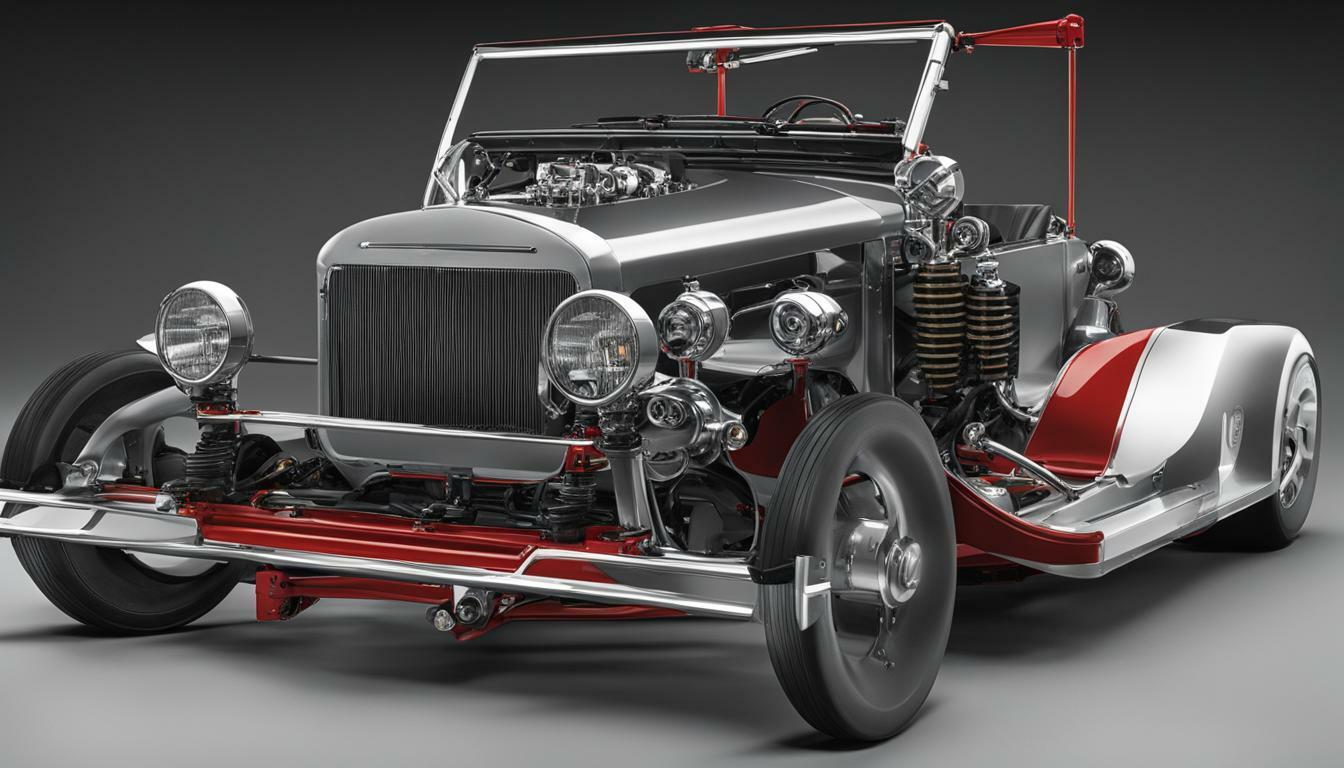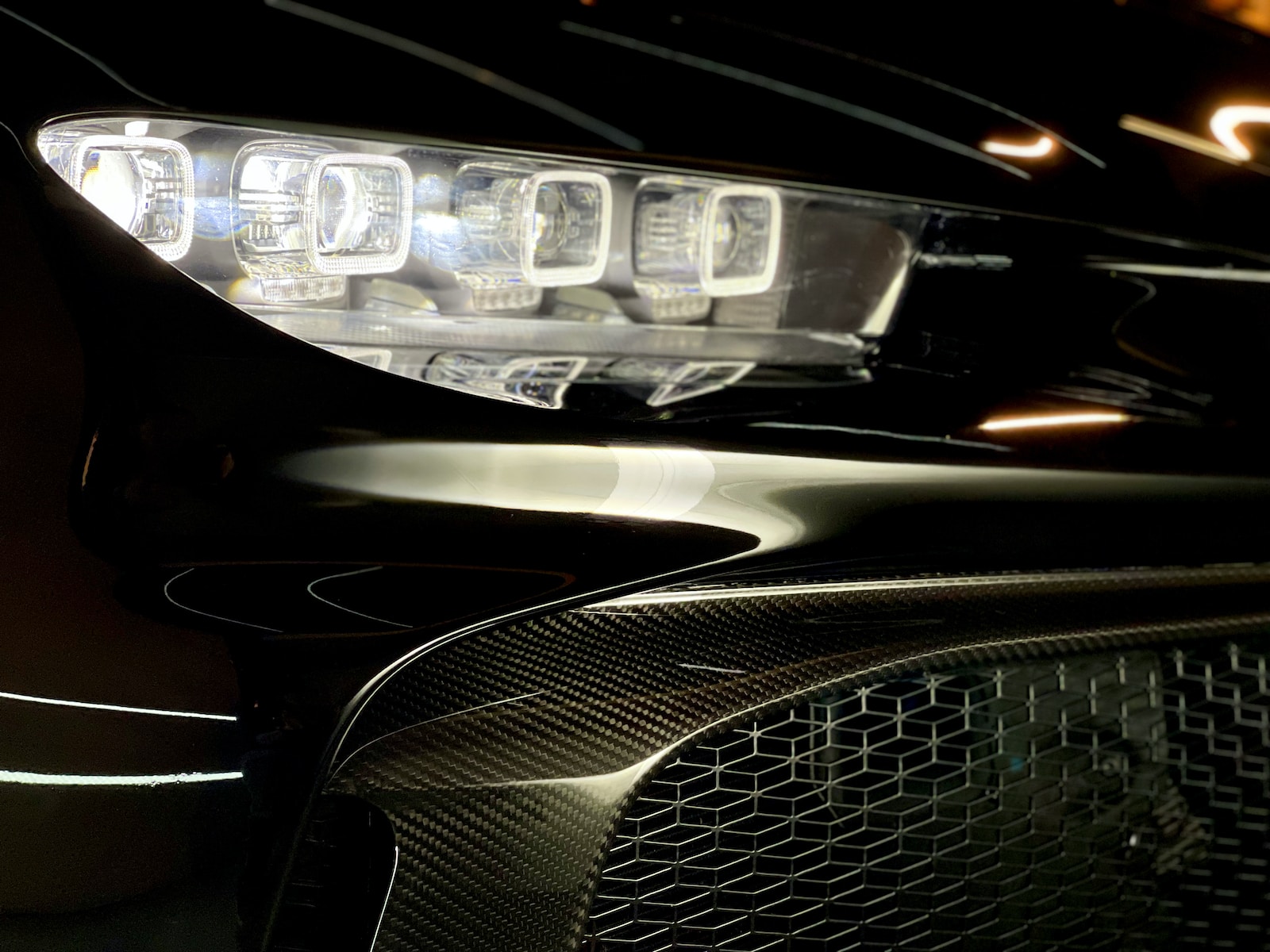As a car owner or enthusiast, it is essential to have a basic knowledge of your vehicle’s components and how they operate. One of the key components of any car is the steering system. There are two main types of steering systems commonly used in vehicles today: recirculating ball and rack-and-pinion. Both of these systems serve the same purpose, but they operate differently and have distinct advantages. In this section, we will explore the differences between recirculating ball and rack-and-pinion steering mechanisms.
Key Takeaways:
- Recirculating ball and rack-and-pinion steering are the two main types of steering systems used in vehicles.
- Both systems operate differently and have distinct advantages.
- Understanding the differences between these two steering systems is essential for enhancing your automobile knowledge.
What is Recirculating Ball Steering?
Recirculating ball steering is a type of steering system commonly used in older vehicles. It consists of a worm gear and a set of balls that recirculate within the gear mechanism. As the steering wheel is turned, the worm gear moves the balls, which in turn move the steering linkage and eventually the wheels.
This type of steering system has been around for many years and has proven to be a sturdy and durable steering mechanism, making it suitable for heavy-duty vehicles. The benefits of a recirculating ball steering system are improved steering control and reduced steering effort. This is due to the larger gear that is used in the system, which makes steering easier and more comfortable for drivers, especially in heavy-duty vehicles.
One of the main advantages of recirculating ball steering is that it has a high level of durability and can withstand heavy use. This makes it a popular choice for trucks and other heavy-duty vehicles that require a strong and reliable steering system.
However, one of the downsides of recirculating ball steering is that it tends to have a bit more play or “slop” in the steering wheel, giving it a slightly less precise feel compared to other systems such as rack-and-pinion steering. Additionally, recirculating ball steering requires more maintenance than other steering systems due to its complexity.
Overall, recirculating ball steering is a good choice for heavy-duty vehicles that require strong and reliable steering, while offering drivers improved steering control and reduced steering effort.
What is Rack-and-Pinion Steering?
Rack-and-pinion steering is a modern and widely used steering system in today’s vehicles. It provides precise and responsive steering, making it popular among drivers. The system comprises a rack (toothed bar) and a pinion (small gear) that are connected to the steering wheel. When the steering wheel is turned, the pinion moves the rack, which then moves the steering linkage and the wheels. Rack-and-pinion steering offers many advantages over other types of steering systems.
One of the primary advantages of rack-and-pinion steering is its improved handling. The steering is more direct and responsive, making it easier to control the vehicle. The system also provides better feedback, giving drivers a better sense of the road and the vehicle’s performance. Rack-and-pinion steering requires less maintenance compared to other types of steering systems, making it a popular choice among drivers.
Rack-and-pinion steering also provides lighter steering effort, which is beneficial for drivers who spend long periods on the road. The system ensures that the steering wheel is easy to turn, reducing the driver’s fatigue and making the driving experience more comfortable.
Rack-and-pinion steering is suitable for a wide range of vehicles, from small and compact cars to larger, heavy-duty vehicles. It is commonly found in modern vehicles and is a significant improvement over the older, less precise steering systems. If you want a steering system that provides precise control, improved handling, and better feedback, rack-and-pinion steering is an excellent choice.
Differences Between Recirculating Ball and Rack-and-Pinion Steering
Recirculating ball and rack-and-pinion steering are two distinct types of steering mechanisms that differ in multiple ways.
One of the most significant differences between recirculating ball and rack-and-pinion steering is the level of precision they offer. Recirculating ball steering tends to have more play or “slop” in the steering wheel, making it slightly less responsive than rack-and-pinion steering.
Additionally, rack-and-pinion steering requires less maintenance compared to recirculating ball steering, and is generally lighter. Rack-and-pinion steering offers more direct and responsive steering, making it popular among drivers.
While recirculating ball steering is commonly found in older or heavy-duty vehicles, rack-and-pinion steering is mostly seen in newer vehicles. Therefore, if you own a modern car or value precise steering control, improved handling, and lighter steering effort, rack-and-pinion steering is likely the better option for you. On the other hand, if you prioritize durability and heavy-duty performance, recirculating ball steering may be a suitable choice.
Overall, understanding the differences between recirculating ball and rack-and-pinion steering is crucial when deciding which steering mechanism is most suitable for your vehicle.
Considerations for Choosing Between Recirculating Ball and Rack-and-Pinion Steering
When it comes to selecting a steering system for your vehicle, there are several factors to consider. One of the most critical considerations is whether to go for recirculating ball or rack-and-pinion steering systems.
If you need a heavy-duty steering mechanism that can withstand harsh conditions and provide superior strength, recirculating ball steering may be the right option for you. This system is known for its robust design and durability, making it perfect for off-road vehicles and heavy trucks. Furthermore, recirculating ball steering offers improved steering control and reduced steering effort, making it easier to navigate through challenging terrains.
On the other hand, if you want a steering system that provides precise and responsive steering, then rack-and-pinion steering should be your choice. This system offers better handling, improved feedback, and lighter steering effort than recirculating ball steering. Moreover, rack-and-pinion steering has fewer moving parts, requires less maintenance, and is more commonly found in modern vehicles.
It is essential to consider the specific needs of your vehicle before making a decision between recirculating ball and rack-and-pinion steering systems. If you prioritize strength and durability, or if you have an older or heavy-duty vehicle, recirculating ball steering may be the way to go. However, if precise steering control, better handling, and lighter steering effort are your priorities, then rack-and-pinion steering is the right option for you.
Conclusion
Choosing the right steering system for your vehicle is an essential aspect of ensuring optimal performance and handling. Both recirculating ball and rack-and-pinion steering have their advantages and disadvantages, depending on your specific needs and requirements. Recirculating ball steering is a durable and robust option that provides better control and reduced steering effort. On the other hand, rack-and-pinion steering offers precision and responsiveness, making it a popular choice for newer vehicles and sports cars.
Ultimately, the decision between recirculating ball and rack-and-pinion steering will depend on your specific needs and preferences. Consider your vehicle’s requirements, your driving style, and the road conditions you typically encounter when making your decision. By carefully weighing these factors and choosing the right steering system, you can ensure a safe, comfortable, and enjoyable driving experience.
FAQ
Q: What is the difference between recirculating ball and rack-and-pinion steering?
A: Recirculating ball steering is a type of steering system commonly used in older vehicles, while rack-and-pinion steering is more modern and widely used in today’s vehicles. Recirculating ball steering uses a worm gear and balls to move the steering linkage, while rack-and-pinion steering uses a rack and pinion connected to the steering wheel.
Q: What are the benefits of recirculating ball steering?
A: Recirculating ball steering offers improved steering control and reduced steering effort. It is also known for its durability and suitability for heavy-duty vehicles.
Q: What are the advantages of rack-and-pinion steering?
A: Rack-and-pinion steering provides precise and responsive steering, improved handling, better feedback, and lighter steering effort. It is a popular choice among drivers for its performance.
Q: What are the key differences between recirculating ball and rack-and-pinion steering?
A: Recirculating ball steering tends to have more play or “slop” in the steering wheel, giving it a less precise feel compared to rack-and-pinion steering. Rack-and-pinion steering offers more direct and responsive steering and requires less maintenance. Rack-and-pinion steering is also more commonly found in newer vehicles, while recirculating ball steering is often seen in older or heavy-duty vehicles.
Q: How do I choose between recirculating ball and rack-and-pinion steering?
A: When choosing between the two types of steering systems, it is important to consider your priorities and the specific needs of your vehicle. If you prioritize durability and heavy-duty performance, recirculating ball steering may be suitable. However, if you value precise steering control, improved handling, and lighter steering effort, rack-and-pinion steering is likely the better option.
Q: What is the conclusion about recirculating ball and rack-and-pinion steering?
A: Understanding the difference between recirculating ball and rack-and-pinion steering is essential for enhancing your automobile knowledge. Recirculating ball steering offers durability and strength, while rack-and-pinion steering provides precise control and improved handling. By considering the specific requirements of your vehicle, you can choose the steering system that best suits your needs.
 Skip to main content
Skip to main content


